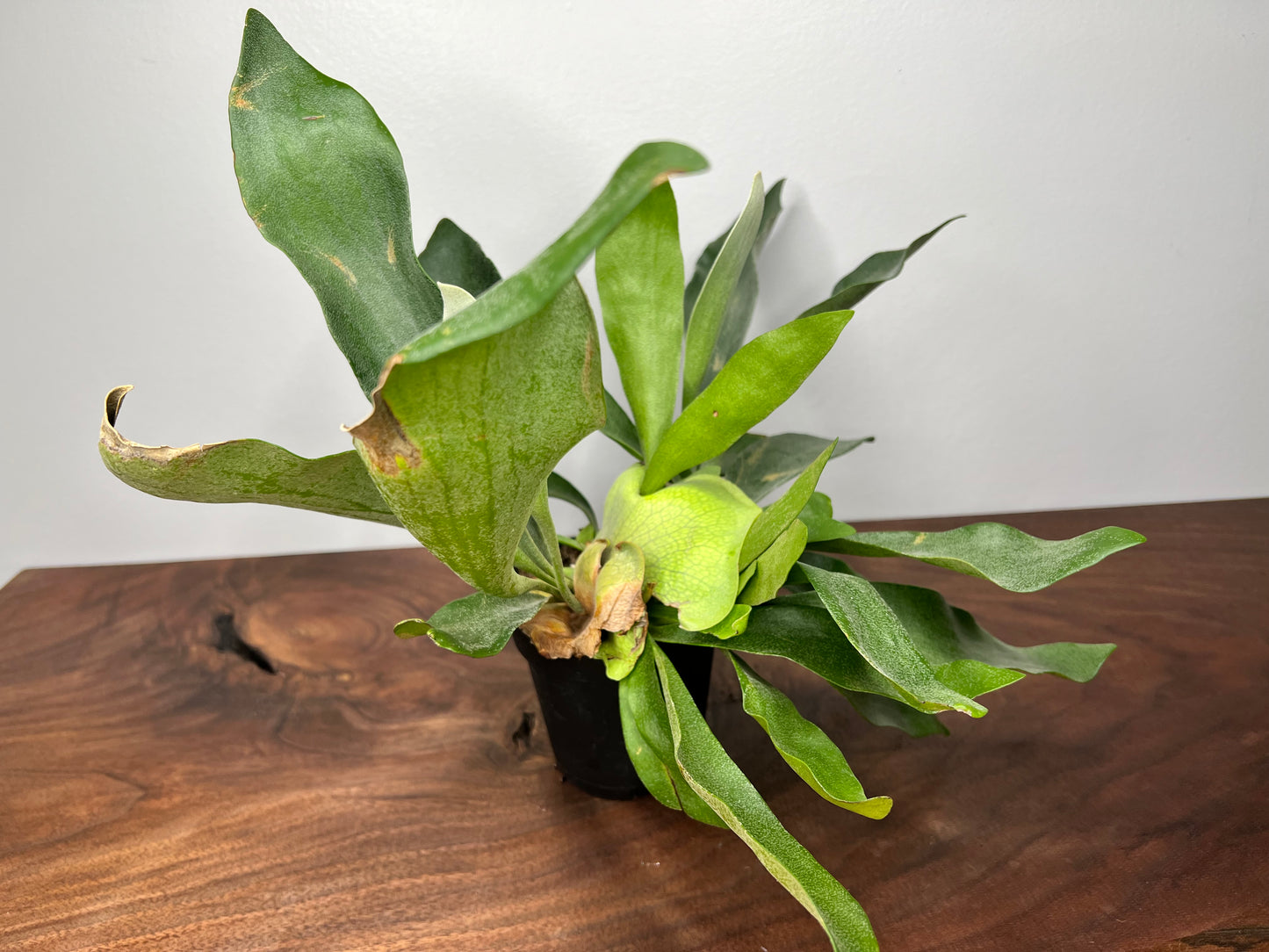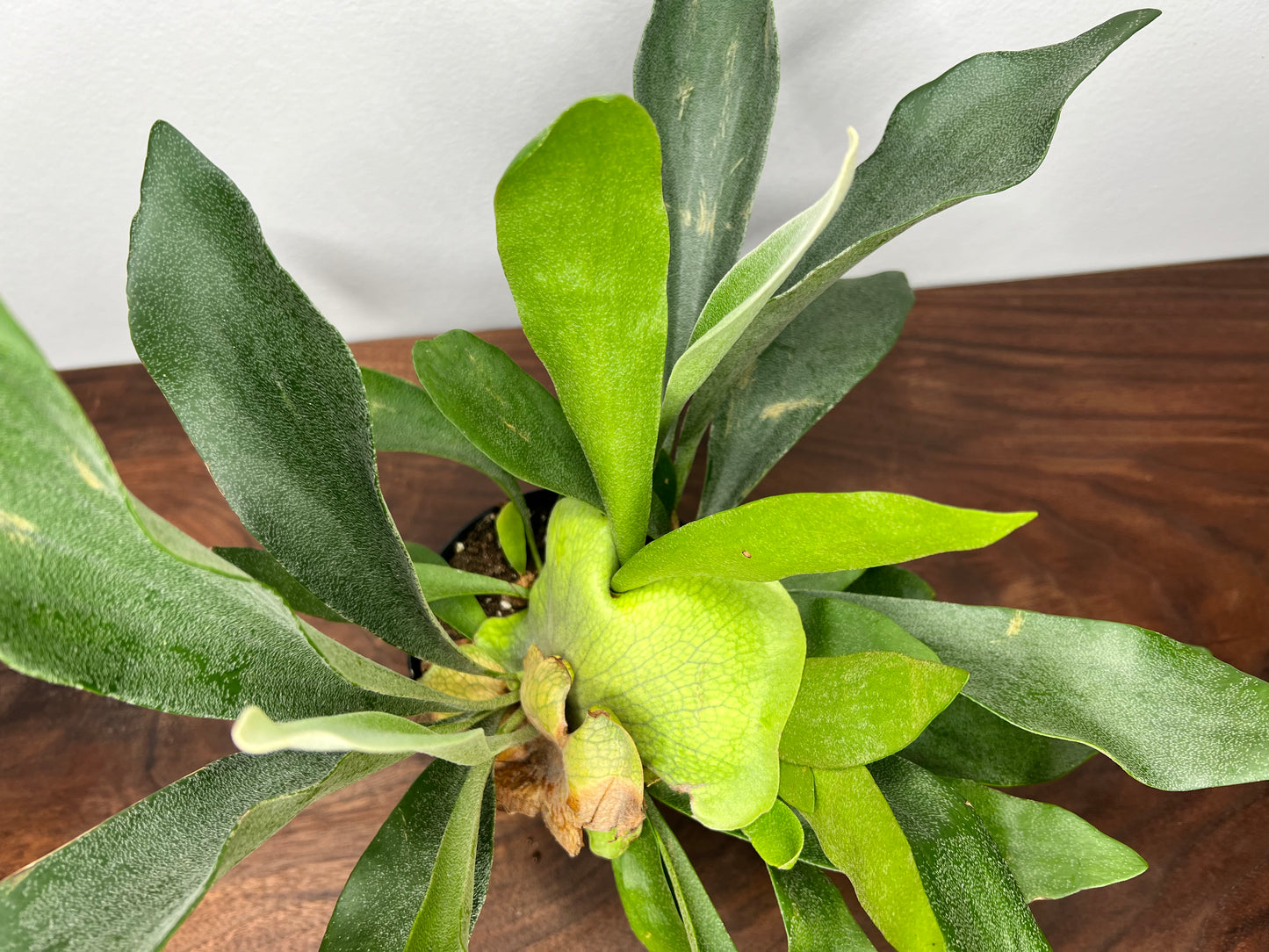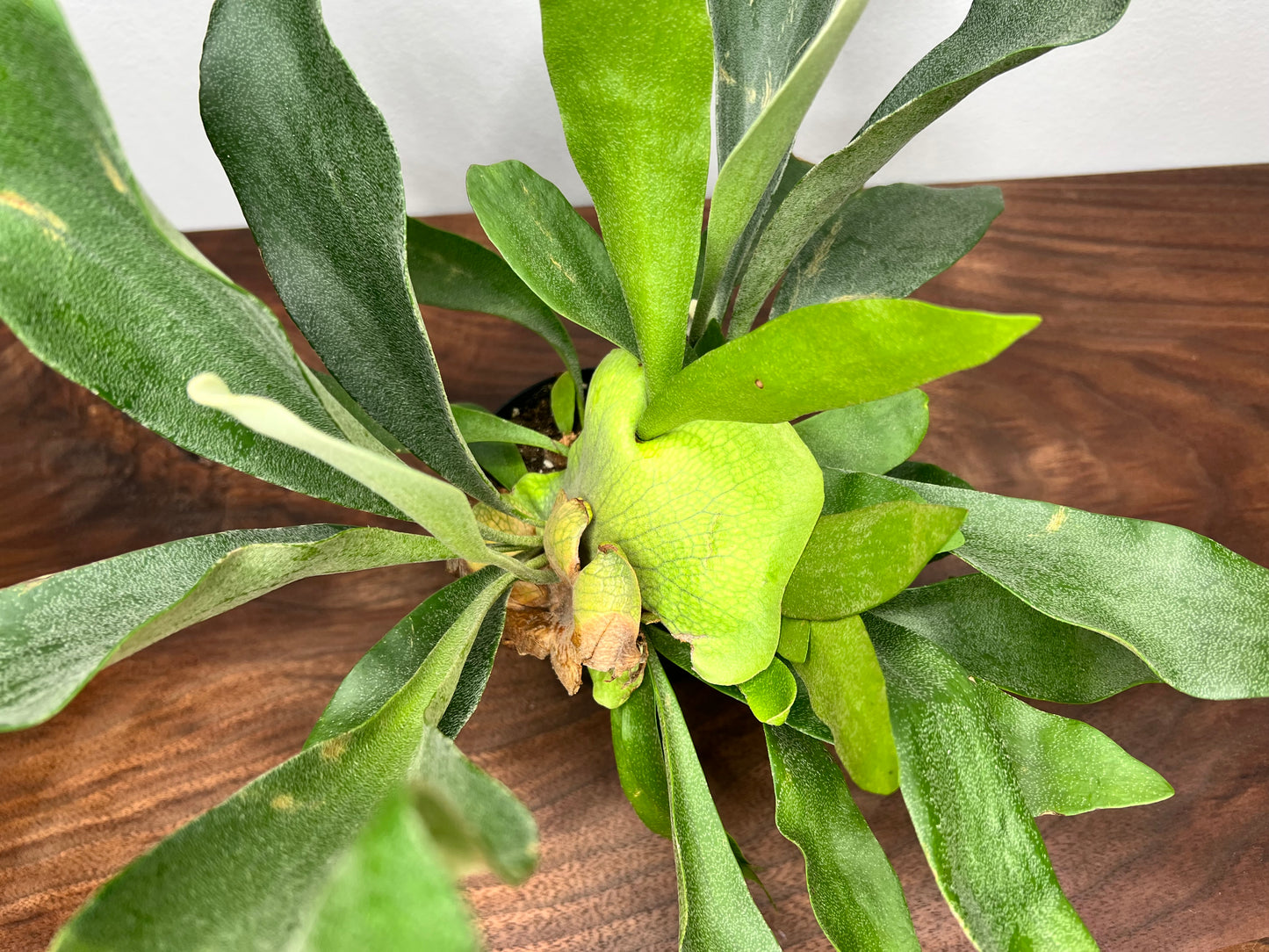The Rooted Plant Shop
Staghorn fern
Staghorn fern
Couldn't load pickup availability
A Staghorn fern is an epiphytic plant which means it grows on other plants or objects for support but is not parasitic. This type of fern is known for its shape that mimics deer or elk antlers. The fern has two distinct leaf forms—small, flat leaves (known as shield fronds) that cover and protect the root ball structure and take up water and nutrients and green, pronged antler fronds that emerge from this base and can reach up to 3 feet in length indoors (and larger in the wild). A staghorn fern grows best in warm, very humid conditions, bright, indirect, or dappled sunlight, in a base of organic soil, and it prefers temperatures between 50 and 100 degrees Fahrenheit.
- Water frequently and consistently but wait until the base dries out before watering.
- Place the staghorn fern in a humid room (such as a bathroom) or increase humidity around the plant.
- Fertilize monthly to promote healthy growth.
- Do not wipe away the white, dust-like material from the fronds of your fern. This material protects the fern from direct, harsh sunlight and drought.
Light
Staghorn ferns prefer to be kept in a location that offers consistent but shaded light. That being said, they can handle more sunlight if given enough water, warmth, and humidity. Just be cautious about allowing any direct rays to hit the fragile fronds, as they can burn easily.
Soil and Mounting
Though young ferns may be started in a moist traditional potting mixture, staghorn ferns should be mounted once they progress toward maturity. Staghorn ferns are epiphytes, growing on the sides of trees or other plants in the wild, and will therefore thrive in similar conditions in your home. To mount, you'll need a starting lump of peat, compost, moss, or other organic matter to act as the base, but beyond that should not need additional soil.
Mounting is done by securing the fern with its bottom embedded in a lump of peat, compost, moss, or another organic material to a wooden board or bark slab, using a fishing line or wire. The mounted fern can then be hung from the wall. As new fronds grow, they will gradually hide the fastening material as they grow to cover the old fronds. Though it grows slowly, a staghorn fern ends up quite large and impressive once mature. The mass can grow large and heavy and may require remounting on a larger slab.1
Water
Proper watering is an essential component of a staghorn fern's success. They'll need frequent watering, but the base should be allowed to dry out in between—about once a week in warmer climates or during the summer months, and once every two to three weeks in cooler months.
Blackening Fronds
It's challenging to find the right amount of water your staghorn fern prefers. If you notice the fronds have begun to blacken towards the base of the plant, it's likely your plant is being overwatered.
Wilting Frond Tips
If the tips of the fronds begin to wilt, the plant probably needs to be watered more frequently.
Brown Shield Fronds
Shield fronds are the small, flat leaves that cover the root structure. It's normal for shield fronds on the base to turn brown and dry up. Shield fronds should be allowed to remain on the plant.
Brown Growth Underneath the Antler Fronds
If you spot a brownish, velvety material on the underside of longer antler fronds, do not worry and do not remove them. The brown velvety material is normal reproductive sporangia.
Share



Let customers speak for us
from 373 reviewsThe way they wrap the plant in the insulation, it creates a tube of warmth for the plant with the heat pack at the bottom.

This is so fun! I received choices on how I would get my plants! 🌱 The one that was sent was perfect along with a cactus and another cute succulent! She has helped me with so many plant issues! Thanks Mel for being an amazing small business!

Everything came beautifully packaged and in such good shape. Thank you!!

I love the way Rooted plant shop wrapped up the plants n tight so they can get here in one piece. Mel also likes to educate us on plants. She makes it really easy helps us of how to take care of the plants. Thank u very much Mel for everything u do for us bottom from my heart. I appreciate u

Shipping was so fast. The plant was so safe and secure when it arrived. Mel is so great, and so knowledge. Never had a disappointing purchase.

The rooted plant shop is impeccable. I am and will continue to be a returning customer. Seller/owner very professional and very knowledgeable in her field of plants. Packaging is packed with great care.. fast shipping as well.. and the plants are as described, healthy and gorgeous!

I bought a Dieffenbachia from Mel she’s beautiful. The third leaf is just now coming out. I can’t be more happier with her.
The Spanish moss from The Rooted Plant Shop are ABSOLUTELY STUNNING!!! Incredibly healthy and full!! So happy and can’t wait for more to be stocked!!












